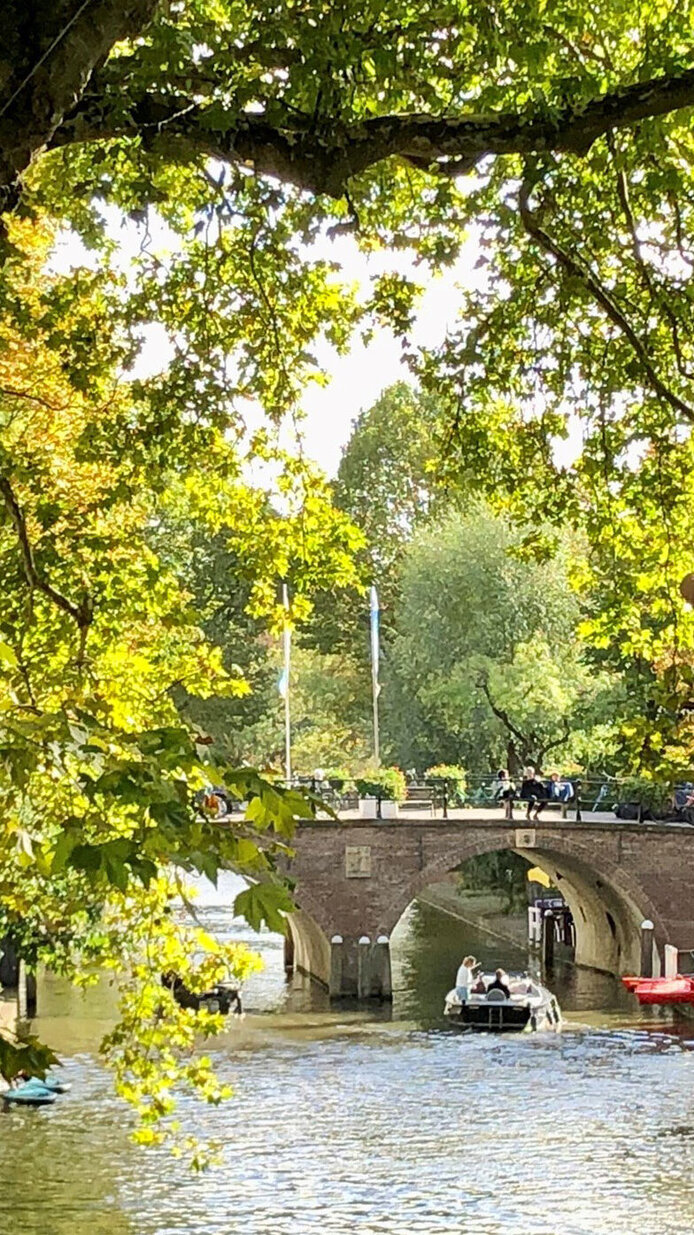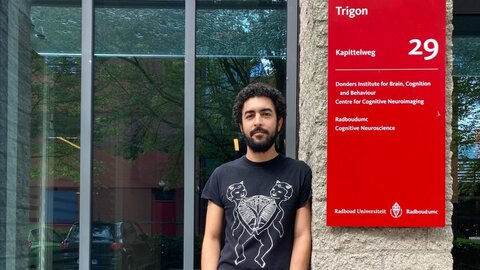Artificial photosynthesis in rainy Utrecht

My colleagues and I used to joke around, wondering how much greener the grass might be at higher-ranked universities where world-famous professors carry out their research. My plan was to use my Schrödinger Fellowship to find out. And by the way, the Netherlands really are lush and green thanks to all the rain they get.
While still in Vienna I laid the foundation for the research question I plan to answer during my scientific stay in Utrecht. I started creating materials that contain building blocks similar to those plants use for photosynthesis. While plants are perishable, these materials remain stable much longer. At Utrecht University, I am researching how these “artificial plants” and light are used in converting CO2. In my work, I use spectroscopic techniques to identify the different chemicals produced and determine how much of each is present during the photoreaction. Gathering this information down to every microsecond (for comparison’s sake: it takes us about 300,000 microseconds to blink) enables us to understand the reaction mechanism and use those findings to develop more efficient materials for converting carbon dioxide.
Tracking chemical reactions in real time
I contacted Bert Weckhuysen at the University of Utrecht, who is one of the pioneers in operando (Latin for working) spectroscopy to tell him about my idea. Operando spectroscopy involves analytical methods that enable us to study chemical reactions as they happen. One advantage is that we can not only identify the products created after the reaction is complete, but also gain insights into intermediate products and how the reaction generally takes place. These are important insights for making chemical reactions, such as converting CO2 or turning biomass into chemical feedstocks, more efficient. These types of experiments often involve several analytical techniques, and findings obtained individually must first be brought together and put into context. This is the research work that I enjoy the most – solving chemistry sudokus!
High-tech equipment for chemical puzzles
In a chemistry sudoku, how many “numbers” you start off with, which in turn determines the puzzle difficulty, often depends on the availability of (usually expensive) measuring equipment. To take my original metaphor one step further, clearly the grass is a little greener here in terms of resources as well. I have access to highly specialised equipment, which allows me to learn many new techniques. Here, collaboration is very important. I appreciate my interactions with my many colleagues, which always take place among equals, regardless of “hierarchical levels” or gender, and often lead to exciting joint research projects. I also enjoy the fact that I can draw on the expertise gained in my previous work and pass it on to doctoral students.
Vienna – Utrecht: The Cultural Differences
The Dutch are open-minded, and the other members of the group welcomed me very warmly, making the transition from home much easier. However, I have felt the nearly 900 kilometres that separate me from Austria not only in fewer visits back home, but also in the cultural differences. While in Vienna you typically get the standard “We’ll see” response (often accompanied by a low-key reaction) or vague feedback (“Not bad”), the Dutch take an engaged, structured and direct approach. Overall, I would sum up my experience as a Schrödinger Fellow as unquestionably positive. My stay in Utrecht has enriched me greatly, both professionally and personally. And my original hypothesis has born out: The grass is indeed green, and captivatingly so, in top-level research.












